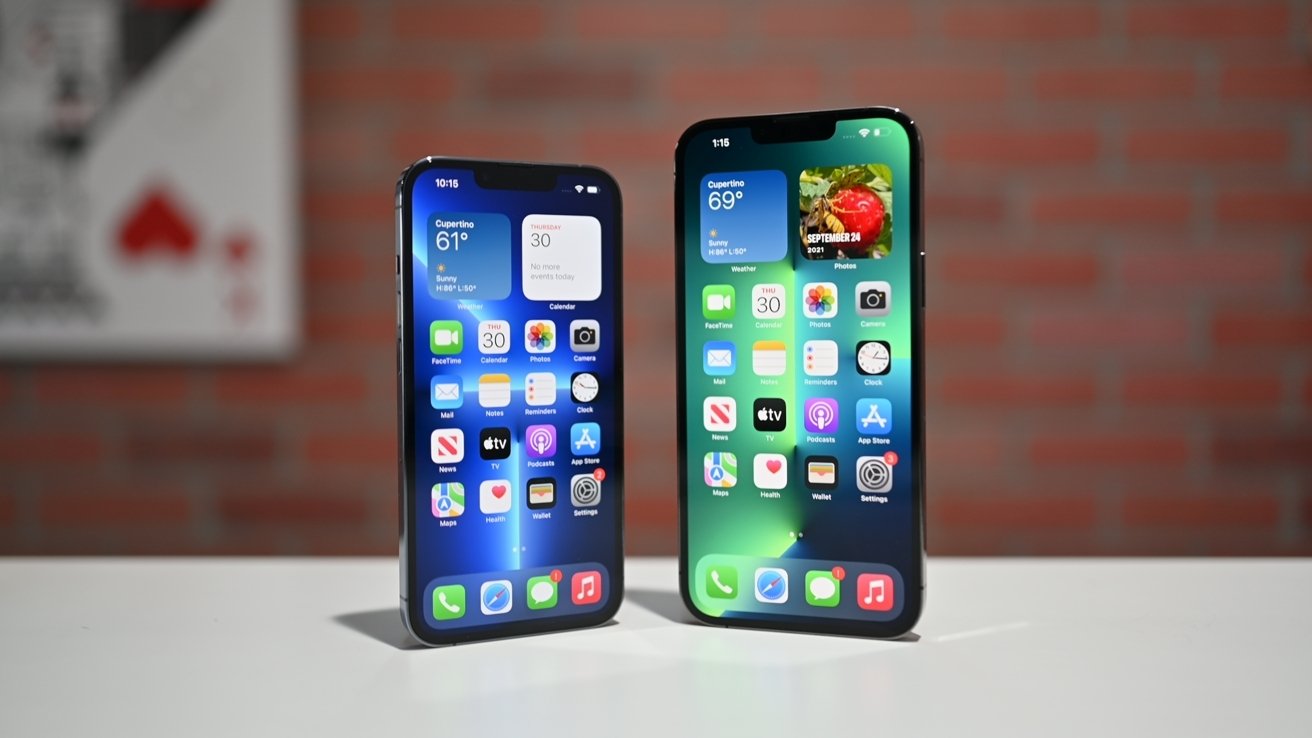Apple appears to be making good on promises to remove barriers to third-party iPhone 13 screen repairs, with experts saying a parts swap can be performed on the latest iOS 15.2 beta with relative ease.
Shortly after iPhone 13 launched, reports from repair specialists revealed that attempts to replace the handset's display would result in disabled Face ID modules. This was in spite of a design change that transitioned the Face ID array from its usual home on iPhone's screen to a seat in the smartphone's chassis.
It was later learned that a microcontroller attached to the display pairs, or serializes, a screen with its host iPhone, hindering unauthorized repairs or replacements. Apple Authorized Service Providers are able to sync new displays with iPhone 13 bodies using specialized software, but third-party firms currently need to move the original chip over to a new screen in a complex and risky process.
Last week, Apple in a statement to The Verge said an upcoming software update would make screen fixes easier by nixing serializing. The company did not provide a release timeline, but it appears that a patch was included in the iOS 15.2 beta issued today.
UK-based repair firm iCorrect conducted a proof of concept screen swap on an iPhone 13 running the iOS 15.2 beta version and found Face ID to be functional after repair.
As noted by The Verge, which reported on iCorrect's findings, a warning message appears upon first startup after a successful swap.
"Unable to determine if your iPhone display is a genuine Apple part. Go to Settings for more information," the pop-up notification reads.
Similar alerts for "unauthorized" battery replacements have been present in iOS since 2019. Designed to dissuade users from conducting repairs on their own, the messages can typically be dismissed without negatively impacting device functionality.
Apple has not confirmed that iPhone 13 screen swapping will be more user-friendly with the public release of iOS 15.2, though the new workflow allowed with today's beta is a strong indication that such support is in the offing.
 Mikey Campbell
Mikey Campbell








 Malcolm Owen
Malcolm Owen
 Charles Martin
Charles Martin



 William Gallagher
William Gallagher
 Christine McKee
Christine McKee
 Marko Zivkovic
Marko Zivkovic









1 Comment
Thing is, the market for 2nd and even 3rd hand or later used iPhones is relatively large. I’ve sold every iPhone I’ve owned for a decent return on investment. I can assure you that every buyer I’ve encountered would not buy my used iPhone if it was rebuilt with other than OEM parts inside. That’s how I keep them and later advertise them for a quick and honest sell.
Im also aware of the huge market on super cheap iPhone’s folks are rebuilding and selling in quantity rather than quality. Serializing screens for sure isn’t in their best interest but Apple has no way to guarantee the quality they advertise after 4 random people put whatever random parts inside it. Today’s phones are expensive and everyone expects their money to go as far as possible and the manufacturers are held to sometimes extreme standards lately.